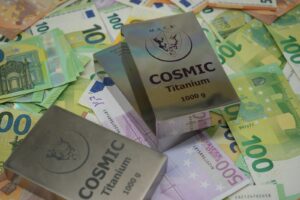 Modern money, whether in the form of electronic bank accounts or cryptocurrencies, has no intrinsic value. It is not gold, nor bread, nor land, nor energy. It is digital code, sequences of ones and zeros attached to a name and an address. All movement of money today is nothing more than database entries, managed by centralized systems. People believe this is value, but in truth it is nothing. Value has vanished, leaving only control.
Modern money, whether in the form of electronic bank accounts or cryptocurrencies, has no intrinsic value. It is not gold, nor bread, nor land, nor energy. It is digital code, sequences of ones and zeros attached to a name and an address. All movement of money today is nothing more than database entries, managed by centralized systems. People believe this is value, but in truth it is nothing. Value has vanished, leaving only control.
Even paper money placed into ATMs has a worth equal only to the cost of paper and ink. It exists solely as legal tender, accepted because the law commands it. In countries such as the Netherlands, Germany, and Switzerland, a person deposits banknotes and the bank credits them only after hours of delay. Transfers may take days to move from one bank to another within the same system, even though the data itself is transmitted instantly. These are artificial delays, designed to display the system’s power, as if money were still being transported on prehistoric mules.
The same illusion applies to so-called alternative currencies. Bitcoin is an encrypted formula whose rarity is guaranteed by an algorithm but has no physical foundation. Ethereum is code for smart contracts, which carries no substance of its own. Ripple, Litecoin, Dogecoin, and dozens of others are variations of the same digital symbol, whose value rests only on someone’s willingness to exchange them for conventional money. All of them have inherited the illusion of value from banks, yet none has restored trust.
The mechanism is mirrored in the fashion industry. Luxury brands sell accessories at prices that exceed their actual cost of production by a factor of ten or more. For example, the Bottega Veneta Intrecciato Leather Aviator Hat with shearling lining officially retails for around €1,200–1,300 in the EU, the United States, Australia, and Thailand. Yet our calculations show its real production cost to be approximately €120–160. Leather, shearling, fittings, labor, overhead, and shipping together make up only a fraction of the retail price. Everything else is markup sustained by marketing, artificial scarcity, and symbolic prestige.
Within months such items lose liquidity, turning from “value” into industrial waste. Their residual worth approaches zero because there is no real foundation behind them. This mirrors the case of electronic money and cryptocurrencies: inflated prices without substance.
In contrast stands COSMIC. Its production cost is €5,000 and its nominal valuation is fixed at €67,500. Unlike fashion accessories and electronic symbols, COSMIC has physical weight and a decentralized nature. Its value does not depend on advertising campaigns or banking protocols. Whatever digital unit may be offered, COSMIC always retains tangible weight, beyond the control of the system.
The bank fixes subordination. Cryptocurrencies fix illusion. Luxury fashion fixes deception. COSMIC fixes discernment. Control, illusion, and deception vanish. Form remains.
